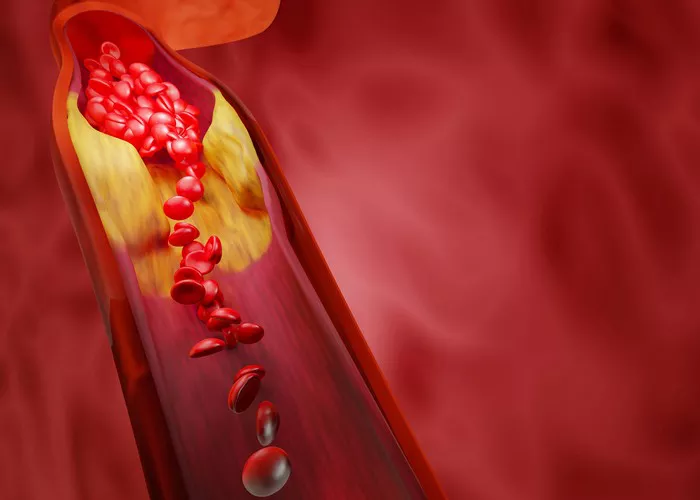Hyperlipidemia, commonly known as high cholesterol, is a condition characterized by elevated levels of lipids (fats) in the blood. These lipids include cholesterol and triglycerides, essential for normal cellular function but harmful in excessive amounts. Hyperlipidemia is a significant risk factor for cardiovascular diseases, including coronary artery disease, stroke, and peripheral artery disease. Among the various types of hyperlipidemia, “unspecified hyperlipidemia” is a classification used when the specific type of lipid disorder is not clearly identified.
Understanding Lipids And Their Role
Lipids are a diverse group of compounds that are insoluble in water but soluble in organic solvents. They play crucial roles in the body, including:
Energy Storage: Triglycerides, a type of lipid, are stored in fat cells and used as an energy source during fasting or prolonged exercise.
Cell Membrane Structure: Phospholipids and cholesterol are vital components of cell membranes, maintaining their integrity and fluidity.
Hormone Production: Steroid hormones, such as cortisol and sex hormones, are derived from cholesterol.
Cholesterol: Good Vs. Bad
Cholesterol is transported in the blood by lipoproteins, which are categorized based on their density:
Low-Density Lipoprotein (LDL): Often referred to as “bad cholesterol,” LDL carries cholesterol from the liver to the cells.
High levels of LDL can lead to cholesterol accumulation in the arteries, forming plaques that narrow and harden the arteries, a condition known as atherosclerosis.
High-Density Lipoprotein (HDL): Known as “good cholesterol,” HDL transports cholesterol from the cells back to the liver for excretion or reuse. High levels of HDL are protective against cardiovascular disease.
Triglycerides: An Important Lipid
Triglycerides are the most common type of fat in the body. They store unused calories and provide energy when needed.
Elevated triglyceride levels are associated with an increased risk of atherosclerosis and cardiovascular disease.
Types of Hyperlipidemia
Hyperlipidemia is classified into several types based on the specific lipid that is elevated:
Primary Hyperlipidemia: Caused by genetic factors, leading to defects in lipid metabolism.
Secondary Hyperlipidemia: Resulting from other conditions or lifestyle factors, such as obesity, diabetes, hypothyroidism, and dietary habits.
see also: What Is Hyperlipidemia Type 2?
Unspecified Hyperlipidemia
Definition and Classification
Unspecified hyperlipidemia is a term used when the exact type of lipid abnormality is not determined. It falls under the ICD-10 code E78.5, which covers various lipid metabolism disorders that do not fit into more specific categories. This classification is often used in initial diagnoses before detailed lipid profiles are available.
Prevalence and Risk Factors
Unspecified hyperlipidemia is prevalent in the general population, often identified during routine blood tests. Risk factors include:
Genetics: A family history of hyperlipidemia or cardiovascular disease increases the risk.
Diet: High intake of saturated fats, trans fats, and cholesterol can elevate lipid levels.
Lifestyle: Sedentary lifestyle, smoking, and excessive alcohol consumption contribute to dyslipidemia.
Medical Conditions: Diabetes, hypothyroidism, kidney disease, and liver disease are associated with secondary hyperlipidemia.
See Also: What Is Hyperlipidemia Type E78.5?
Pathophysiology of Hyperlipidemia
Lipid Metabolism
Lipid metabolism involves complex processes of lipid absorption, transportation, storage, and utilization. The liver plays a central role in regulating lipid levels by producing and clearing lipoproteins.
Dysregulation in any of these processes can lead to hyperlipidemia.
Atherosclerosis Development
Atherosclerosis is a chronic inflammatory condition initiated by lipid accumulation in the arterial walls. The process involves:
Endothelial Dysfunction: High levels of LDL and other risk factors damage the endothelial cells lining the arteries.
Lipid Infiltration: LDL particles penetrate the endothelium and accumulate in the arterial wall.
Inflammation: The immune system responds to lipid accumulation by sending white blood cells to the site, leading to inflammation.
Plaque Formation: Over time, the lipid core, along with fibrous tissue and calcium deposits, forms a plaque that narrows the artery and reduces blood flow.
Plaque Rupture: Unstable plaques can rupture, triggering the formation of blood clots that can block arteries, causing heart attacks or strokes.
Diagnosis of Hyperlipidemia
Lipid Profile Test
A lipid profile test is essential for diagnosing hyperlipidemia. It measures:
Total Cholesterol: The sum of LDL, HDL, and VLDL cholesterol.
LDL Cholesterol: Directly measured or calculated using the Friedewald equation.
HDL Cholesterol: Measured directly.
Triglycerides: Measured directly.
Other Diagnostic Tests
Apolipoprotein B (ApoB): Represents the number of atherogenic particles and provides additional risk information.
Lipoprotein(a): Elevated levels are a genetic risk factor for cardiovascular disease.
Management of Hyperlipidemia
Lifestyle Modifications
Dietary Changes: Adopting a heart-healthy diet rich in fruits, vegetables, whole grains, and lean proteins. Reducing intake of saturated fats, trans fats, and cholesterol.
Exercise: Regular physical activity helps lower LDL and triglycerides while raising HDL.
Weight Management: Achieving and maintaining a healthy weight can improve lipid levels.
Smoking Cessation: Quitting smoking improves HDL levels and overall cardiovascular health.
Alcohol Consumption: Limiting alcohol intake is essential as excessive drinking can raise triglyceride levels.
Pharmacological Treatment
Statins: The most commonly prescribed drugs for lowering LDL cholesterol by inhibiting HMG-CoA reductase.
Fibrates: Effective in reducing triglycerides and increasing HDL levels.
Niacin: Lowers LDL and triglycerides while raising HDL, though its use has declined due to side effects.
Cholesterol Absorption Inhibitors: Ezetimibe reduces cholesterol absorption in the intestines.
PCSK9 Inhibitors: Monoclonal antibodies that significantly lower LDL levels by increasing the clearance of LDL from the bloodstream.
Complications of Uncontrolled Hyperlipidemia
Coronary Artery Disease (CAD): Leading to angina, heart attacks, and heart failure.
Stroke: Due to atherosclerosis in the carotid arteries.
Peripheral Artery Disease (PAD): Causing pain and reduced blood flow to the limbs.
Pancreatitis: Severe hypertriglyceridemia can lead to inflammation of the pancreas.
Conclusion
Hyperlipidemia, particularly unspecified hyperlipidemia, is a common and significant health concern due to its role in the development of cardiovascular diseases. Early diagnosis, lifestyle modifications, and appropriate pharmacological treatment are essential for managing this condition effectively. Ongoing research and advancements in genetics and novel therapies hold promise for improved outcomes in patients with hyperlipidemia. By understanding and addressing the underlying causes and risk factors, healthcare providers can help patients achieve better lipid control and reduce the risk of cardiovascular complications.


